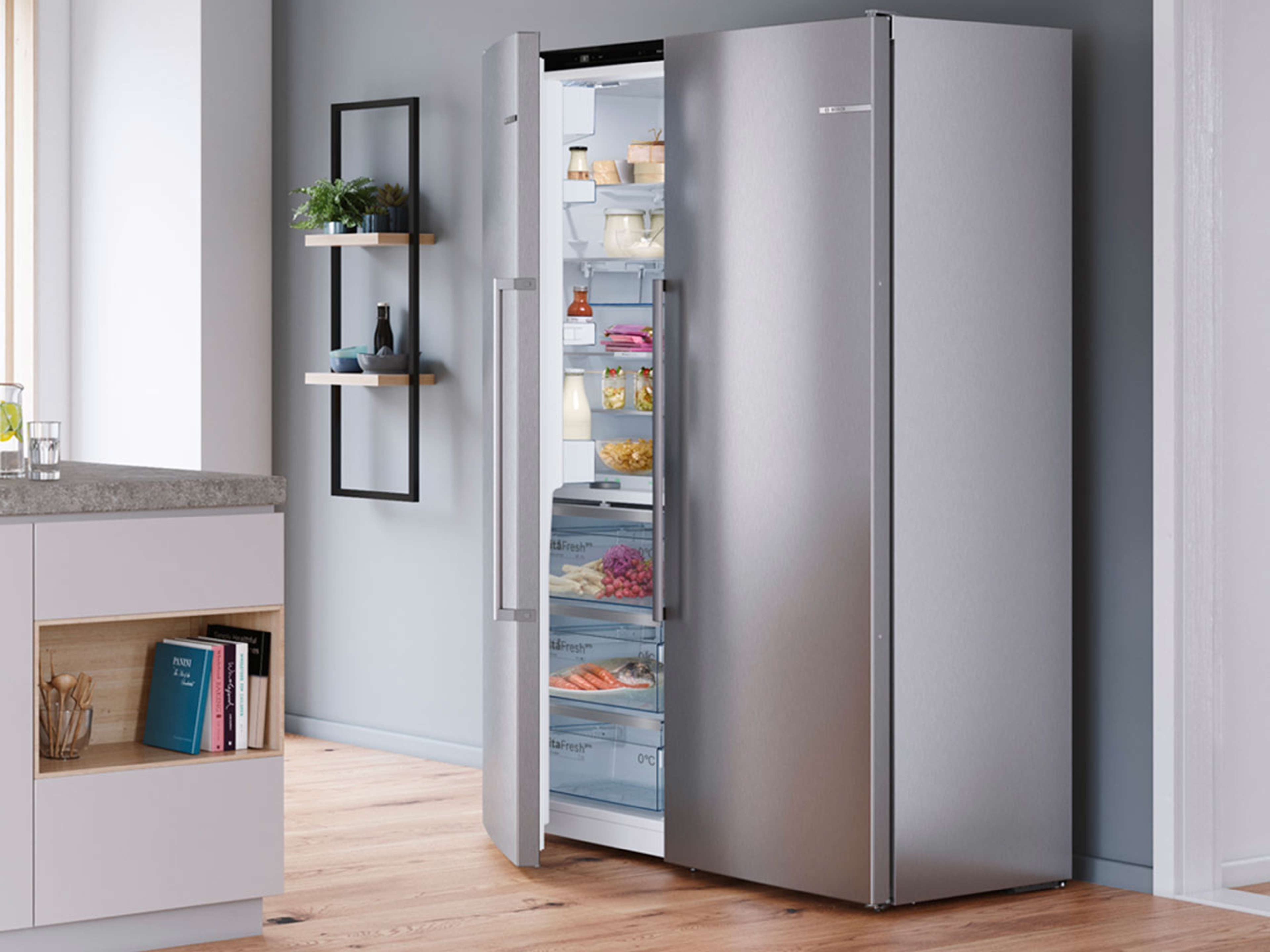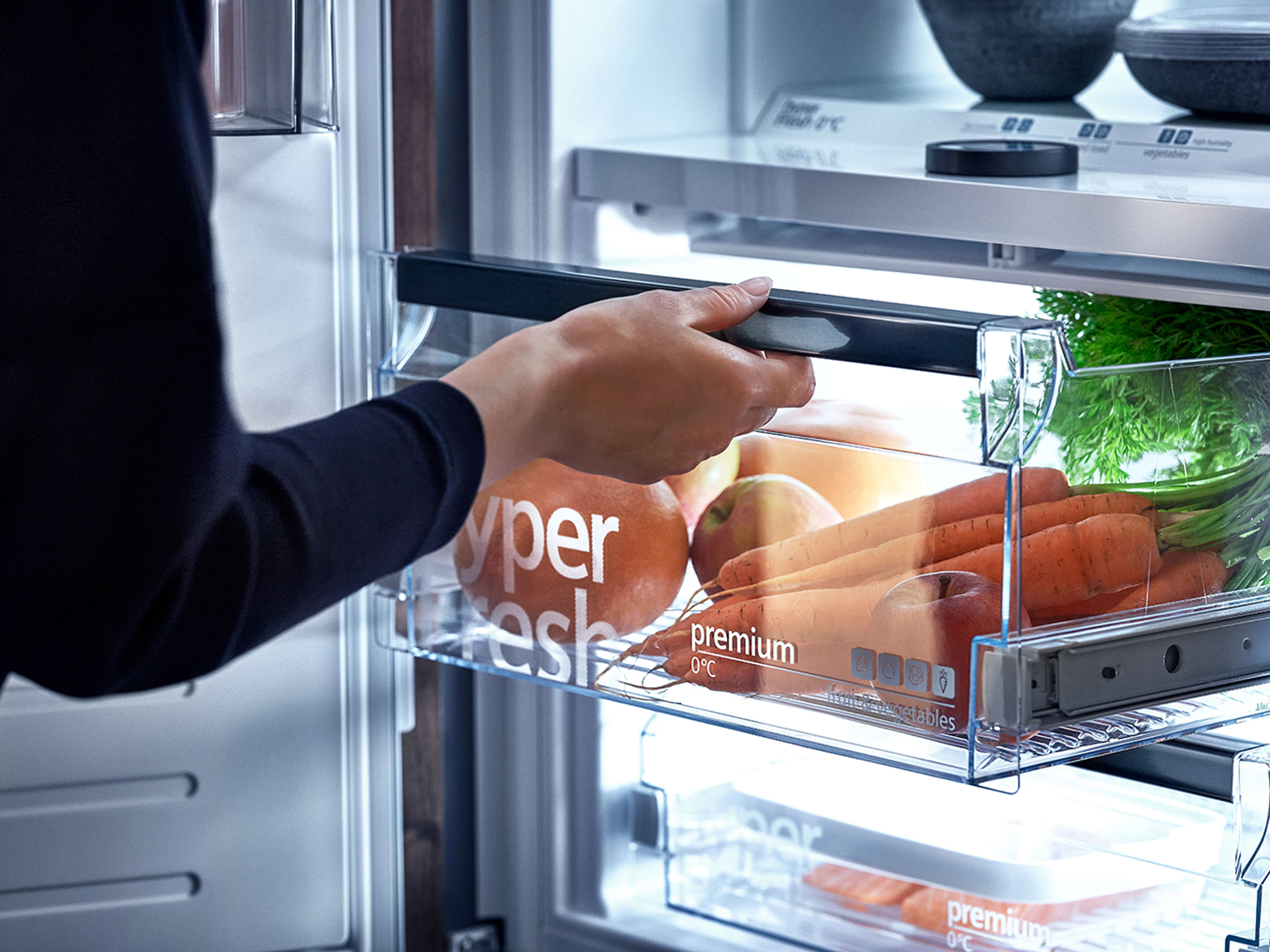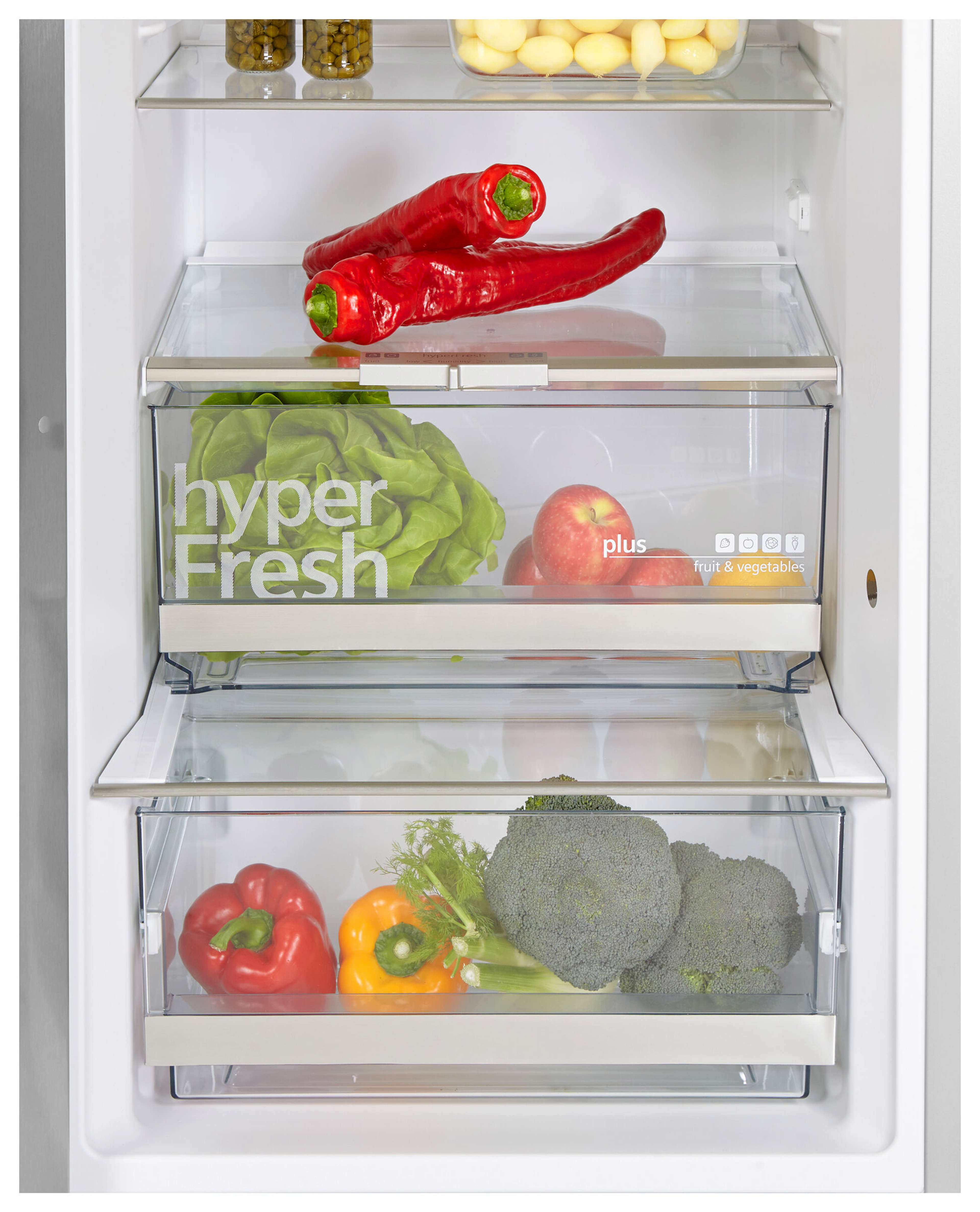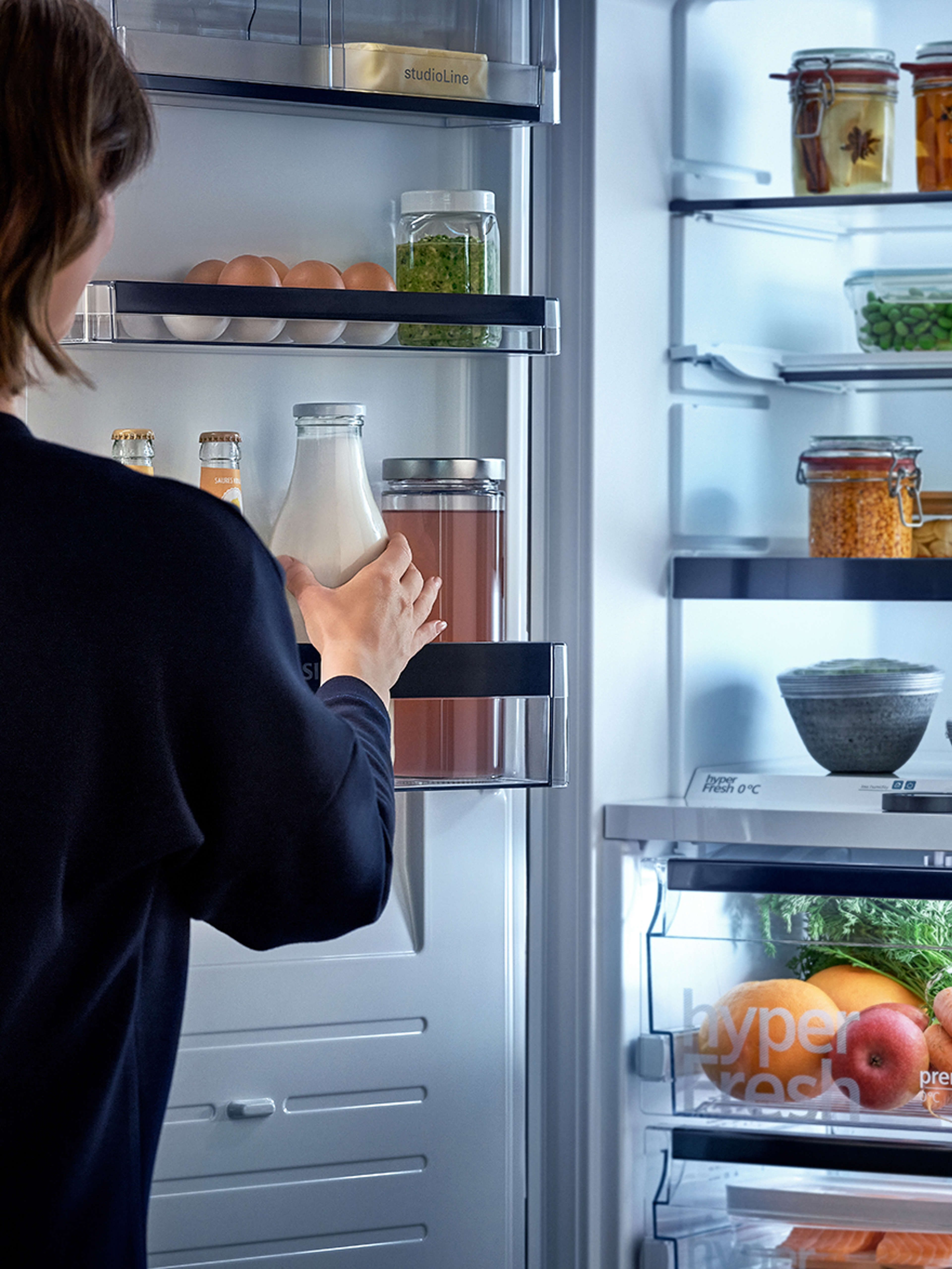
Master the art of fridge organisation — unlock freshness and reduce waste.
Did you know the longevity and freshness of your food can be significantly enhanced simply by positioning them on the appropriate shelf within your fridge? A well-organised fridge helps you save time and money and ensures that your food stays fresh for longer – a win-win! Efficient organisation can reduce food waste, lower energy consumption, and even simplify meal planning. Read on for our top tips for fridge organization to optimise space, keeping food fresh, and improve overall efficiency.
1. Clean and declutter
Start by emptying your fridge and giving it a thorough cleaning. Remove all the shelves and drawers, and clean them with warm, soapy water. Wipe down the interior walls of the fridge using a mild cleaner or a solution of vinegar and water. Don't forget to clean the coils at the back of the empty fridge (if you have them).
Before putting items back into your fridge, take the opportunity to check expiration dates. Dispose of any expired or spoiled food items. This ensures you have a fresh and organized fridge with only the items you need.

2. Organize by zones
Divide your fridge into different zones based on temperature and usage. This can help maintain food safety and maximize the longevity of your items. By strategically organizing your refrigerator shelves, you can optimize temperature control and effectively manage usage. Here’s our suggested layout:
Top shelf:
Place ready-to-eat foods and store leftovers on the top shelf. This area has a more consistent temperature, making it suitable for cooked and prepared foods. By keeping them at eye level, you'll be more likely to remember and utilize them promptly.
Middle shelf:
Maintain the ideal temperature range in this section for items like dairy products, deli meats, and condiments. These items benefit from consistent cooling without being subjected to extreme temperature fluctuations.
Lower shelf:
The lower shelf of your fridge, being the coldest part, is perfect for storing raw meat, poultry, and seafood. Use sealed containers or plastic bags to prevent cross-contamination and ensure food safety.
Crisper drawers:
The fridge’s crisper drawers are true superheroes when it comes to maintaining the perfect humidity level for your beloved fruits and veggies. To harness their powers effectively, it's best to keep your fruits and veggies separated into two drawers. Why, you ask? Well, it's because some fruits, like apples, mangos, passionfruit, and tomatoes, are known ethylene producers. By giving them their own space, you prevent the ethylene gas from affecting the delicate balance of your veggies.
Fridge door:
The fridge door is the warmest area, making it suitable for storing condiments, sauces, and pickles. Arrange these items in the refrigerator door compartments, ensuring that taller jars are on the bottom shelf to prevent them from tipping over. Store frequently used items at eye level for easy access.



3. Use storage containers and labels
Transparent storage containers allow you to see their contents without having to open them. This can save time when searching for ingredients and helps you keep track of what's in your fridge.
Labelling storage containers with the date and contents makes it easier to practice the "first in, first out" method. With clear information about what's inside and when it was stored, you can prioritize consuming items that are nearing their expiration date, ensuring that your food stays fresh and safe to eat.
Tip: Stackable storage containers are a game-changer for maximizing vertical space in your fridge. They allow for efficient use of available room, creating multiple tiers of storage.

4. Keep an inventory
Make a list of what's in your fridge to help track their expiration date and avoid buying duplicates. Including expiration or "best before" dates in your inventory helps you identify items that need to be consumed soon, ensuring food safety and minimizing waste.
Start by choosing a method that works best for you, such as a paper list, whiteboard, or a digital app on your smartphone. Some apps are specifically designed for tracking the inventory and can even send reminders when items are about to expire.
Remember to categorize your inventory list by categories such as fruits, vegetables, dairy, meats, and leftovers. This makes it easier to locate specific items and plan meals accordingly.
Take a few minutes each week to review your inventory and plan meals accordingly. This helps you stay on top of expiration dates and ensures that you're using the items you have on hand.
5. Regular cleaning set
Regularly cleaning your fridge is essential to maintain a clean and hygienic environment. Aim to clean it every 3 to 4 months to prevent spills, odors, and food residue buildup. This helps keep your fridge fresh, odor-free, and safe for storing food. By making fridge cleaning a routine, you promote food safety and extend the lifespan of your appliance. So, roll up your sleeves and give your fridge the cleaning love it deserves!

When you take the time to organize your fridge, you unlock a world of benefits. Not only does it improve efficiency, saving you time and money, but it also promotes a healthier lifestyle by reducing the risks of foodborne illnesses. By embracing proper organization techniques, you contribute to a greener approach to living, minimizing food waste and embracing sustainability. So, let's dive into the world of an organized fridge and experience the positive impact it brings to your everyday life.


